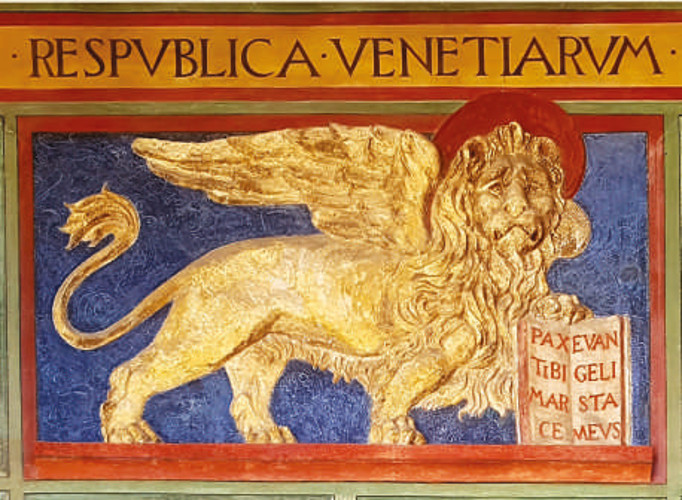Display board 2
VENICE LAYS THE BASIS FOR THE BIRTH OF THE SILK INDUSTRY IN ROVERETO
It is a common belief that the art of sericulture was introduced in Rovereto during the dominion of the Venetian Republic between 1416 and 1509. Actually this belief was spread in the early C 20th when the Serenissima was being mythologized to underline the Italian spirit of this principal town of the Vallagarina from an irredentist (Italian patriotic) viewpoint.
Even if there is no historical evidence for crediting Venice with the introduction of the silk industry to Rovereto, in many ways it is true that during its dominion the basis was established for the development of this activity, which became fundamental to the town's economy.
First of all came the elimination of the feudal political structure which involved payment in tithes and corvée (unpaid labour), substituted by a more modern administrative system, selecting representatives of the people from among the most prominent families. Consequently the better-off citizens were able to increase their wealth buying new lands and offering loans to public bodies. In this way capital was created which was then invested in the silk industry. With a new fiscal policy "excise duties" were eliminated, as were taxes on goods for use within the town. This lowered the cost of living and essential goods and, consequently, significantly reduced the cost of labour.
Then the introduction of the mulberry tree changed the landscape of the valley in the following centuries. When Rovereto returned to being part of the Holy Roman Empire, the privileges conferred by Venice were confirmed by the Hapsburg Emperor Maximillian and strenuously defended by the citizens.
THE ART OF SILK-MAKING IN ROVERETO
During the C 16th some immigrants from the Veneto and others of German origin introduced silk-making to Rovereto. The first person in the town to become involved with this precious material was a merchant from Bassano, Girolamo Savioli who in 1534 secured the privilege of making silk fabric and probably also produced thread using manually operated machines.
The first mill known for certain to have been driven by water was built in 1580 by the brothers Verleger Grigioni of Nuremberg. This mill was built in via Portici and obtained its motor power from a wheel driven by water from the Great Millrace. The building housing this production, managed by the Verleger family was the most important in the town and even in the C 18th was called "the great mill".
Some of Rovereto's wealthier citizens began to invest in silk manufacture, a highly profitable enterprise, alongside the foreigners, gradually taking over from them both in the production and sales.
Cobelli, Rosmini Serbati, Cosmi, Piomarta, Candelpergher are some of the numerous merchants to be drawn into the silk trade in the second half of the C 18th and whose lavish residences are still recognisable today in the town centre.
